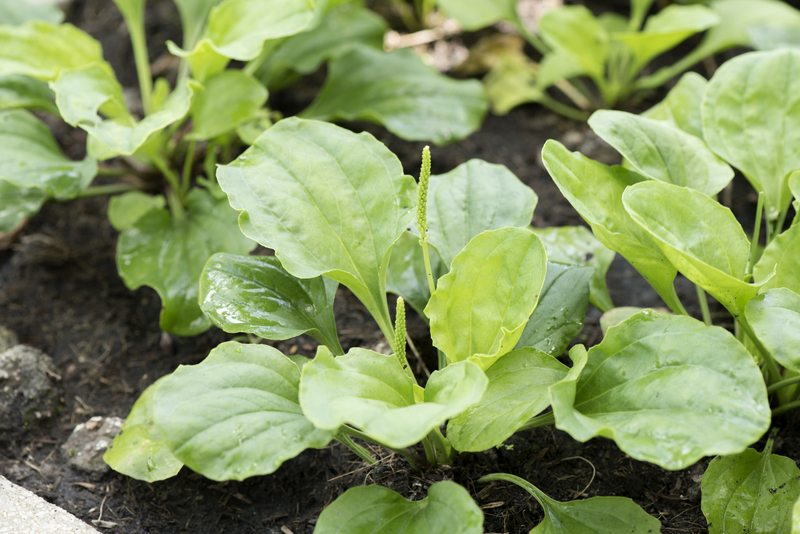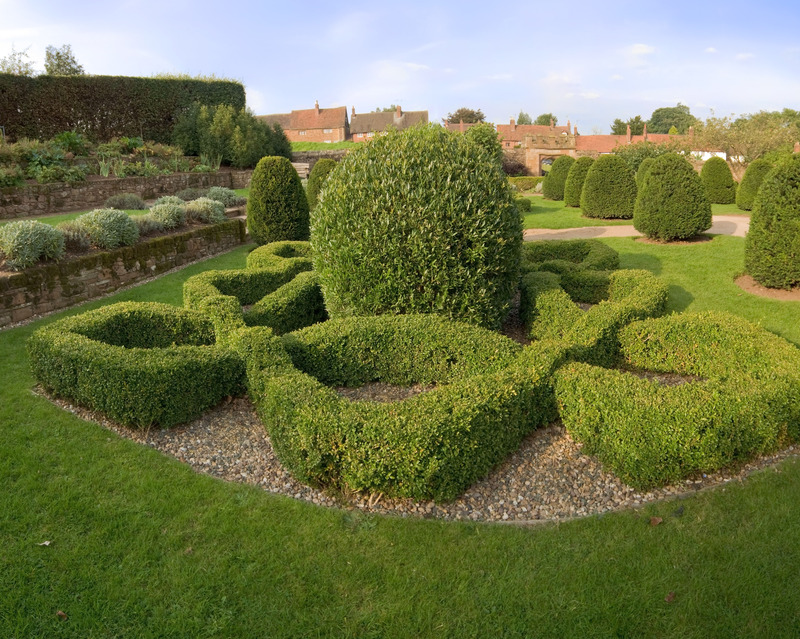Garden Freedom: 3 Key Tips for Weed Control
Posted on 26/06/2025
Garden Freedom: 3 Key Tips for Weed Control
Are you tired of persistent weeds taking over your cherished garden space? Imagine enjoying your garden freedom--free from the relentless invasion of unwanted plants! In this comprehensive guide, we unveil the top three essential tips for effective weed control, empowering gardeners of all levels to maintain a healthy, vibrant, and beautiful outdoor sanctuary. Grab your gloves and let's unlock the secrets to weed-free gardening!
Why Effective Weed Control Is Essential for Garden Freedom
Weeds are far more than just an eyesore. These invaders compete with your plants for water, nutrients, sunlight, and space, often stunting growth and diminishing yields. If left unchecked, a garden quickly becomes a battleground, leaving little room for your desired blooms or crops. Achieving true garden freedom means consciously adopting practical and sustainable weed management strategies.
- Nutrient Competition: Weeds absorb vital nutrients, starving your plants.
- Pest and Disease Hosts: Many weeds harbor pests and diseases, endangering your garden's health.
- Aesthetic Concerns: Overgrown weeds detract from the beauty and structure of any garden.
By taking control, you ensure a thriving, productive, and visually appealing landscape.

1. Proactive Prevention: Stop Weeds Before They Start
Master the Art of Mulching for Garden Freedom
One of the most effective ways to prevent weed growth is by mulching. This simple yet powerful technique works by blocking sunlight and making it difficult for weeds to take root. It's a cornerstone method for weed prevention--especially for organic gardeners or those seeking low-maintenance solutions.
- Organic Mulches: Use materials such as straw, shredded leaves, grass clippings, or wood chips. These break down over time, enriching the soil with organic matter.
- Inorganic Mulches: Options like landscape fabric, black plastic, or gravel effectively suppress weeds for larger or perennial beds.
Pro Tip: Apply mulch in a layer at least 2-4 inches thick, particularly in flower beds and around vegetable plants. Leave some space around stems to prevent rot.
Plant Densely: Crowd Out Weeds Naturally
Dense planting strategies--such as using ground covers, closely spaced vegetables, or flowering perennials--leave little sunlight or space for weeds to thrive. Try companion planting, or introduce spreading plants like creeping thyme or sweet woodruff. Not only will your garden look lush, but weed seeds will also find it difficult to gain a foothold.
- Ground Covers: Use low-growing species to form a living mulch across soil.
- Succession Planting: Replant spaces quickly after harvest to minimize bare soil exposure.
Garden freedom starts with a strong defense--these proactive steps are your first line against unwanted weeds.
2. Strategic Removal: Eliminate Existing Weeds Efficiently
Manual Weed Pulling: Best Practices for Success
No matter how diligent you are, it's inevitable: some weeds will appear. When they do, timely action is crucial. Hand pulling weeds is highly effective, especially in smaller gardens or near delicate plants. But to truly win the war on weeds, technique matters:
- Pull When Wet: After a rain or deep watering, soil loosens, making weed removal easier.
- Get the Roots: Grasp the weed at its base and pull gently; many perennial weeds regrow from root fragments left behind.
- Use Tools: Employ a hoe, hand fork, or weeding knife for tap-rooted or deep-rooted invaders.
Tip: Dispose of weeds with seeds or invasive roots away from compost piles to avoid re-infestation.
Hoeing and Cultivation: Targeting Weeds with Precision
For larger beds and open areas, regular hoeing keeps weed seedlings in check. Choose a day when soil is dry, as hoed seedlings dehydrate and wither quickly.
- Scuffle Hoe: Best for shallow-rooted weeds; skim just below the soil's surface.
- Draw Hoe: More effective for deeper or established weeds.
*Consistent, shallow hoeing is an eco-friendly way to maintain weed-free garden beds without chemical intervention.*
Targeted Organic Solutions: Safe and Effective
Should you need extra help, consider organic weed control methods that won't harm beneficial insects or surrounding plants.
- Boiling Water: Pour directly onto weeds in paths or cracks (avoid wanted plants).
- Vinegar Sprays: Household vinegar can desiccate young weeds; aim carefully to avoid ornamentals.
- Flame Weeding: Small torch weeders destroy young seedlings on non-flammable surfaces.
*Be cautious with all spot treatments and always follow safety guidelines.*
3. Sustainable Weed Management: Plan for Long-Term Success
Build Healthy Soil to Outcompete Weeds
Healthy soil--rich in organic matter, well-drained, and teeming with beneficial microbes--naturally suppresses many unwanted plants. Adding compost regularly encourages robust crops and ornamentals that can crowd out competing weeds.
- Compost Boost: Add well-rotted compost each season to feed soil and boost plant health.
- Cover Crops: Plant "green manure" crops like clover or winter rye in the off-season. These suppress weeds, enhance soil, and add nutrients for future planting.
Patience and Persistence: Consistency Pays Off
Weed control is *not* a one-time task--it's a season-long commitment. With consistent efforts, your weeds will diminish year after year. Set aside a short period each week for inspection and maintenance, and consider keeping a gardening journal to track trouble spots.
- Regular Inspections: Walk your garden frequently to spot and handle weeds before they seed.
- Adjust Techniques: Try new preventive measures as needed and adapt to seasonal changes.
- Enjoy the Process: Time spent in your garden--nurturing and weeding--is also time spent enjoying your hard work and growth.
Bonus Tip: Avoid Common Weed Control Mistakes
Many gardeners unknowingly encourage weed growth with a few avoidable missteps. Stay vigilant and avoid these pitfalls:
- Turning Over Soil Excessively: This practice brings buried weed seeds to the surface, encouraging germination.
- Letting Weeds Go to Seed: A single weed can produce thousands of seeds, greatly increasing next season's burden.
- Ignoring Edges and Borders: These areas are often overlooked but quickly become weed nurseries if left unmanaged.
With foresight and continuous effort, you can sidestep these traps and achieve true freedom from weeds.

Frequently Asked Questions About Garden Freedom and Weeds
What's the Difference Between Annual and Perennial Weeds?
Annual weeds (e.g., crabgrass, chickweed) germinate, grow, and die within one season, but they return each year from seeds. Perennial weeds (e.g., dandelions, bindweed) live for multiple years and regrow from roots. Knowing the difference helps target your weed control approach.
Are All Weeds Bad?
Surprisingly, not all weeds are entirely harmful. Some attract pollinators or improve soil quality. However, rampant weeds tend to dominate, so selective management is key for successful and freedom-filled gardening.
Is Chemical Weed Control Necessary?
For most gardens, integrated methods including mulching, manual removal, and smart planting will suffice for effective weed management. Reserve chemical controls for severe infestations, and always follow label instructions to protect the environment.
Conclusion: Achieve Lasting Garden Freedom
Cultivating a weed-free garden doesn't have to be overwhelming. By focusing on prevention, using strategic removal techniques, and committing to sustainable weed management practices, any gardener can enjoy a healthy, lush, and beautiful outdoor retreat. Let these three key tips for weed control be your guide to lasting garden freedom.
- Proactive prevention stops weed spread before it starts.
- Strategic removal keeps existing weeds in check without excessive effort or chemicals.
- Sustainable management ensures long-term garden health and beauty.
Empower yourself with effective weed control strategies and watch your garden flourish--free from unwanted intruders. Embrace the joy and satisfaction of true garden freedom!


